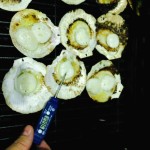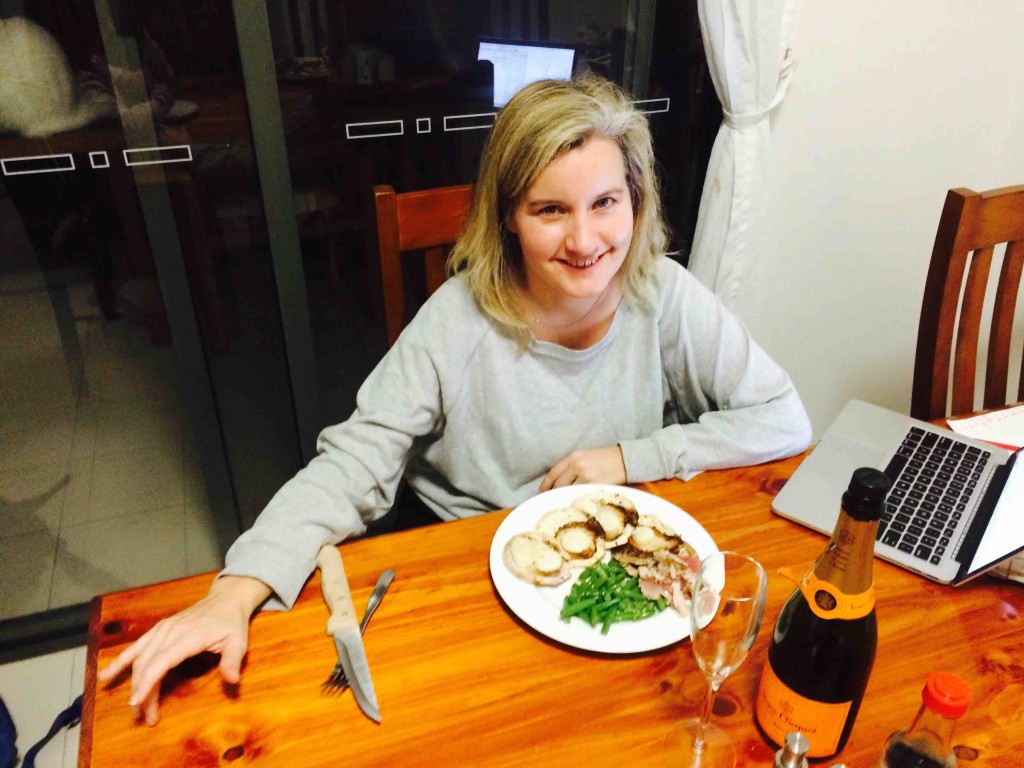The U.S. Centers for Disease Control reports that the Minnesota Department of Health and the Minnesota Department of Agriculture, along with CDC and the U.S. Department of Agriculture’s Food Safety and Inspection Service (USDA-FSIS), are investigating two outbreaks of Salmonella Enteritidis infections linked to raw, frozen, breaded and pre-browned stuffed chicken entrees.
 In one outbreak, four people infected with a strain of Salmonella Enteritidis have been reported from Minnesota. Two of these ill people have been hospitalized. No deaths have been reported.
In one outbreak, four people infected with a strain of Salmonella Enteritidis have been reported from Minnesota. Two of these ill people have been hospitalized. No deaths have been reported.
In the second outbreak, three people infected with a different strain of Salmonella Enteritidis have been reported from Minnesota. Two of these ill people have been hospitalized. No deaths have been reported.
On July 1, 2015, USDA-FSIS issued a public health alert due to concerns about illnesses caused by Salmonella that may be associated with raw, frozen, breaded and pre-browned, stuffed chicken products.
USDA-FSIS advises all consumers to safely prepare and cook these products. Read more on the Advice to Consumers page.
As a result of the first investigation, on July 2, 2015, Barber Foods recalled approximately 58,320 pounds of Chicken Kiev because it may be contaminated with Salmonella Enteritidis.
The product subject to recall includes a 2 lb.-4 oz. box containing six individually pouched pieces of “Barber Foods Premium Entrees Breaded-Boneless Raw Stuffed Chicken Breasts with Rib Meat Kiev” with use by/sell by dates of April 28, 2016, May 20, 2016, and July 21, 2016.
This is a frozen, raw, stuffed chicken product.
Consumers should check their freezers for the recalled Chicken Kiev product and should not eat it.
Consumers with the product should return it to the place of purchase or contact the company directly at (844) 564-5555.
Illnesses in other states linked to either outbreak have not been identified but the investigation is ongoing. Updates will be provided when more information is available.
 The Minnesota Department of Health (MDH) and the Minnesota Department of Agriculture (MDA), along with CDC and the U.S. Department of Agriculture’s Food Safety and Inspection Service (USDA-FSIS), are investigating two outbreaks of Salmonella Enteritidis infections linked to raw, frozen, breaded and pre-browned stuffed chicken entrees.
The Minnesota Department of Health (MDH) and the Minnesota Department of Agriculture (MDA), along with CDC and the U.S. Department of Agriculture’s Food Safety and Inspection Service (USDA-FSIS), are investigating two outbreaks of Salmonella Enteritidis infections linked to raw, frozen, breaded and pre-browned stuffed chicken entrees.
Public health investigators are using the PulseNet system to identify illnesses that may be part of these outbreaks. PulseNet is the national subtyping network of public health and food regulatory agency laboratories coordinated by CDC. DNA “fingerprinting” is performed on Salmonella bacteria isolated from ill people by using a technique called pulsed-field gel electrophoresis, or PFGE. PulseNet manages a national database of these DNA “fingerprints” to identify possible outbreaks. Two DNA “fingerprints” (outbreak strains) are included in these outbreak investigations. The two strains represent the most common Salmonella Enteritidis strains in the PulseNet database. Because the two strains are so common, most of the illnesses identified as having matching PFGE patterns may not be related to this outbreak. Investigators are using additional laboratory methods, including whole genome sequencing, to help clarify which illnesses may be related to these outbreaks.
Investigation of the Outbreaks
In the first outbreak, MDH identified four people infected with a strain of Salmonella Enteritidis with illness onset dates ranging from April 5, 2015 to June 8, 2015. Two people were hospitalized. Epidemiologic and traceback evidence linked these illnesses to eating Barber Foods brand Chicken Kiev raw stuffed chicken breast. This investigation is ongoing.
In the second outbreak, MDH identified three people infected with a different strain of Salmonella Enteritidis with illness onset dates ranging from May 9, 2015 to June 8, 2015. Two people were hospitalized. The MDH and MDA investigation found that illnesses occurred after the people had eaten Antioch Farms brand Cordon Bleu raw stuffed chicken breast. This investigation is also ongoing.
On July 1, 2015, USDA-FSIS issued a public health alert due to concerns about illnesses caused by Salmonella that may be associated with raw, frozen, breaded and pre-browned, stuffed chicken products. In the alert, USDA-FSIS advises all consumers to safely prepare and cook these products to a temperature of 165°F.
As a result of the first outbreak investigation, on July 2, 2015, Barber Foods recalled approximately 58,320 pounds of Chicken Kiev because it may be contaminated with Salmonella Enteritidis. The product subject to recall includes a 2 lb.-4 oz. box containing six individually pouched pieces of “Barber Foods Premium Entrees Breaded-Boneless Raw Stuffed Chicken Breasts with Rib Meat Kiev” with use by/sell by dates of April 28, 2016, May 20, 2016, and July 21, 2016. The product was available for purchase at Sam’s Club retail stores in Illinois, Minnesota, and Wisconsin.
Illnesses in other states linked to either outbreak have not been identified but the investigation is ongoing. CDC and state and local public health partners are continuing laboratory surveillance through PulseNet to identify additional ill people and to interview them. Updates will be provided when more information is available.












